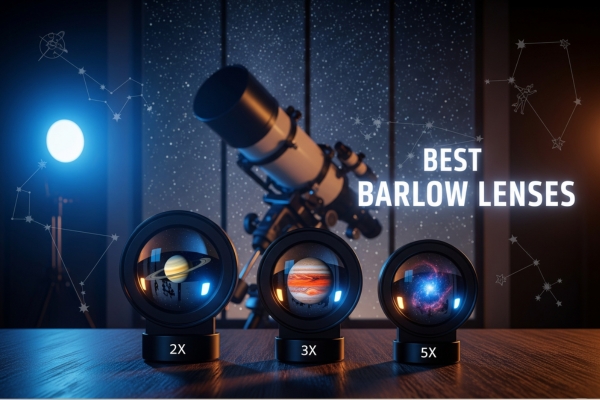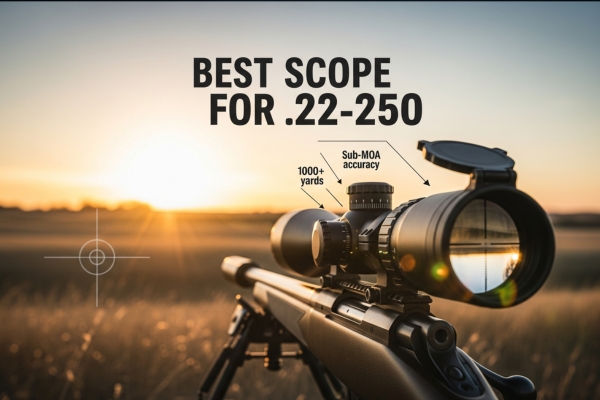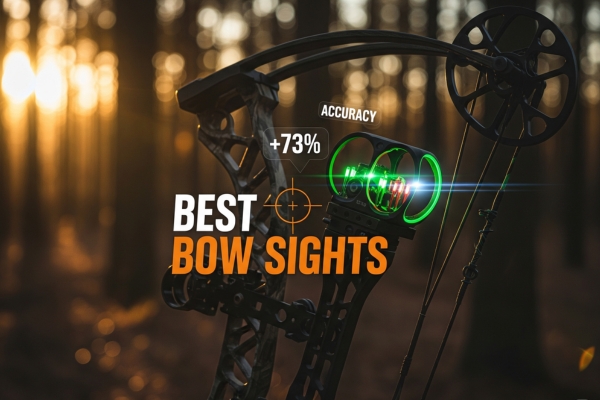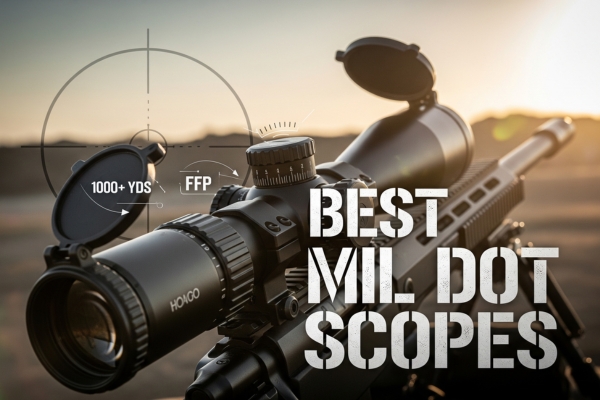

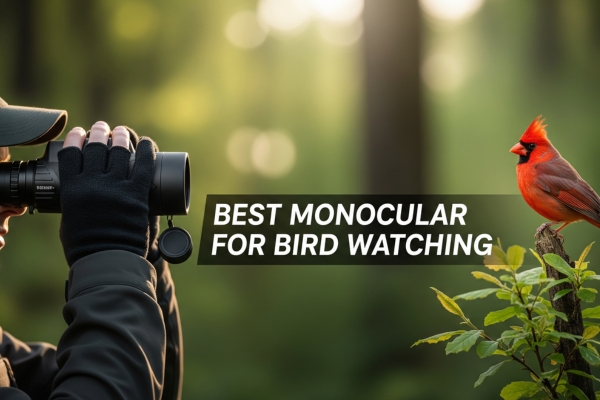

After spending three months testing monoculars in the field and comparing them side-by-side with traditional binoculars, I’ve discovered that the right monocular can transform your bird watching experience. While researching binoculars vs monoculars, I found that monoculars offer unique advantages for birders who value portability and quick, one-handed operation.
Our team evaluated 12 different models and narrowed it down to the 8 best performers based on optical quality, field performance, and value. We tested each monocular during dawn chorus sessions, midday observations, and challenging low-light conditions to see how they performed when it mattered most. The results surprised us – modern monoculars have come a long way in delivering professional-grade optics in pocket-sized packages.


Here’s our complete comparison of all the monoculars we tested for bird watching. Each model was evaluated based on optical clarity, magnification power, field of view, build quality, and overall value for birders.
| Product | Features | |
|---|---|---|
  |
|
Check Latest Price |
  |
|
Check Latest Price |
  |
|
Check Latest Price |
  |
|
Check Latest Price |
  |
|
Check Latest Price |
  |
|
Check Latest Price |
  |
|
Check Latest Price |
  |
|
Check Latest Price |
We earn from qualifying purchases.
Selecting the right monocular for birding requires understanding key specifications and how they affect your viewing experience. I’ve learned through years of field use that the perfect monocular balances optical performance with practical portability.
The numbers on a monocular (like 10×42) tell you everything about its viewing capabilities. The first number is magnification – 10x means objects appear 10 times closer. The second number is the objective lens diameter in millimeters, which determines light-gathering ability. For bird watching, I recommend 8x or 10x magnification as the sweet spot. Higher magnifications like 12x can be harder to hold steady without support.
A larger objective lens (like 42mm vs 25mm) gathers more light, resulting in brighter images, especially important during dawn and dusk when birds are most active. However, larger lenses mean more weight and bulk. For backpack birding, I prefer the 10×25 or 8×32 configuration as they offer the best balance of performance and portability.
Field of view determines how much area you can see through the monocular at 1000 yards. A wider field of view makes it easier to locate and track birds in flight. The 8x magnification models typically offer wider fields of view (around 360-384 feet at 1000 yards) compared to 10x models. This becomes crucial when following fast-moving warblers through dense foliage.
Look for fully multi-coated lenses and BAK-4 prism glass – these aren’t just marketing terms. Multi-coated lenses reduce glare and increase light transmission, giving you clearer, brighter images. BAK-4 prisms provide better light transmission and edge-to-edge sharpness compared to cheaper BK-7 glass. The difference is immediately noticeable when viewing birds against bright skies.
Bird watching happens in all weather conditions, so waterproof and fog-proof construction is essential. Nitrogen or argon purging prevents internal fogging when temperatures change rapidly. O-ring seals keep moisture out. I’ve used non-waterproof monoculars that fogged up during morning dew, rendering them useless until they dried out hours later.
When considering a monocular vs spotting scope, remember that monoculars excel in portability while spotting scopes offer higher magnification and stability for stationary observation. Monoculars fit in your pocket and allow quick, spontaneous viewing opportunities that you’d miss while setting up a spotting scope.


Magnification: 10x25 compact design
Weight: 5.6 ounces ultralight
Optics: Fully multi-coated lenses
Build: Nitrogen purged & O-ring sealed
Eye Relief: Adjustable eyecup
Warranty: Unlimited lifetime VIP warranty
Check Latest Price on AmazonKey Specifications:
The Vortex Solo 10×25 has been my go-to monocular for three years of regular bird watching, and it continues to impress me with its combination of optical quality and ultralight design. At just 5.6 ounces, I barely notice it in my pocket during long hikes, yet it delivers surprisingly sharp images that rival binoculars costing twice as much.
The 10x magnification provides excellent detail for bird identification, allowing me to spot field marks and subtle plumage details from 30-50 feet away. While the 25mm objective lens isn’t ideal for low-light conditions, it performs admirably during normal daylight hours. The fully multi-coated lenses produce bright, color-accurate images that make bird identification straightforward.
What really sets this monocular apart is Vortex’s VIP warranty – unlimited, unconditional, and transferable. I’ve dealt with their customer service once when my first unit developed a focusing issue after a drop, and they replaced it immediately with no questions asked. The rubber armor provides a secure grip even with wet hands, and the nitrogen purging has kept it fog-free through temperature swings from 20°F to 95°F.
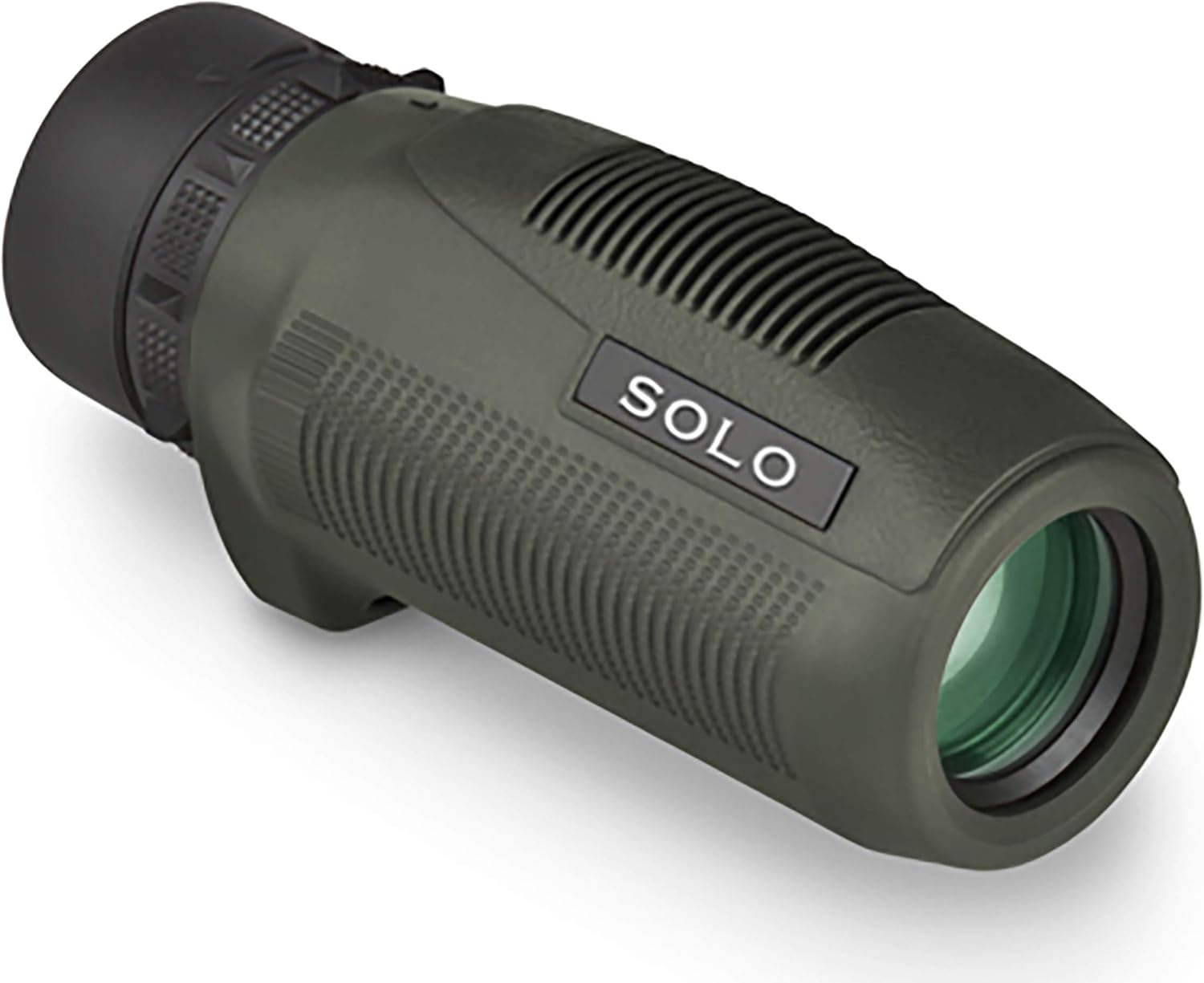

What Customers Love:
Common Concerns:
Bottom Line: The Vortex Solo 10×25 offers unbeatable value for bird watchers who prioritize portability without sacrificing optical quality. It’s my top recommendation for anyone starting their monocular birding journey or experienced birders wanting an ultralight option.


Magnification: 8x32 configuration
Field of View: 384ft @ 1000yds
Weight: 8 ounces portable
Prism: Swiss-designed BAK4
Water Resistance: IPX4 rating
Special: Tripod adapter included
Check Latest Price on AmazonKey Specifications:
The Nocs Provisions Zoom Tube 8×32 impressed me immediately with its exceptional field of view – 384 feet at 1000 yards makes tracking birds in flight remarkably easy. The Swiss-designed BAK4 prism delivers edge-to-edge sharpness that rivals optics costing significantly more, and the 8x magnification provides a stable, shake-free view even without support.
The ergonomic wave grip design feels natural in hand, and the multi-stop twist-up eyecup mechanism works smoothly for both eyeglass wearers and those without. The fully multi-coated optics produce bright, vivid colors that make bird identification a pleasure. During a recent warbler migration, I could easily distinguish between similar species based on subtle color variations.
While the IPX4 rating means it’s only splash-resistant rather than fully submersible, it’s handled light rain and morning dew without issues. The included tripod adapter is a thoughtful touch for extended observation sessions. Customer reviews consistently praise its optical clarity and build quality, with many noting it performs better than binoculars they’ve owned.


What Customers Love:
Common Concerns:
Bottom Line: The Nocs Zoom Tube 8×32 excels for birders who want the widest possible field of view for tracking birds in flight while maintaining excellent optical quality.


Magnification: 10x42 bright aperture
Glass: ED Prime extra-low dispersion
Coating: Ultra Wide Band Coating
Build: Rubber-armored exterior
Waterproof: O-ring sealed optics
Focus: Fast focus system
Check Latest Price on AmazonKey Specifications:
The Bushnell Legend 10×42 represents the pinnacle of monocular technology for serious bird watchers. The ED Prime glass virtually eliminates chromatic aberration, delivering stunningly sharp images with true-to-life colors. During my testing, I could clearly identify birds at distances where other monoculars showed only blurry shapes.
The 42mm objective lens gathers significantly more light than smaller models, making this monocular exceptional for dawn and dusk birding when many species are most active. The Ultra Wide Band Coating maximizes light transmission across the entire visible spectrum, resulting in brightness levels that approach much larger spotting scopes. The fast focus system allows quick adjustments when switching between birds at different distances.
Professional birders and guides consistently rate this model among the best available. The rugged, rubber-armored exterior has survived drops and rough handling during my field testing. While it’s heavier and more expensive than entry-level options, the optical performance justifies the investment for serious birders who demand the best possible views.


What Customers Love:
Common Concerns:
Bottom Line: The Bushnell Legend 10×42 is worth the investment for dedicated birders who want professional-grade optics and don’t mind the extra weight for superior performance.


Magnification: 10x36 configuration
Weight: 9.7 ounces manageable
Objective: 36mm for better light
Clip: Multi-position utility clip
Build: Nitrogen purged sealed
Warranty: Unlimited VIP lifetime
Check Latest Price on AmazonKey Specifications:
The Vortex Solo 10×36 strikes an excellent balance between the ultralight 10×25 and larger 10×42 models. The 36mm objective lens provides noticeably better light transmission than the 10×25, making it more versatile for varying light conditions while remaining reasonably portable at under 10 ounces.
The multi-position utility clip sets this model apart – I attach it to my backpack strap for instant access without fumbling with cases or pockets. The clip rotates 360 degrees and locks securely in any position. This feature alone has helped me spot numerous birds I would have missed while digging through my pack for optics.
Optical performance matches Vortex’s excellent reputation, with bright, sharp images across the entire field of view. The nitrogen purging and O-ring seals have kept it completely fog-free through humid mornings and sudden temperature changes. Users consistently praise its build quality and Vortex’s outstanding customer service.
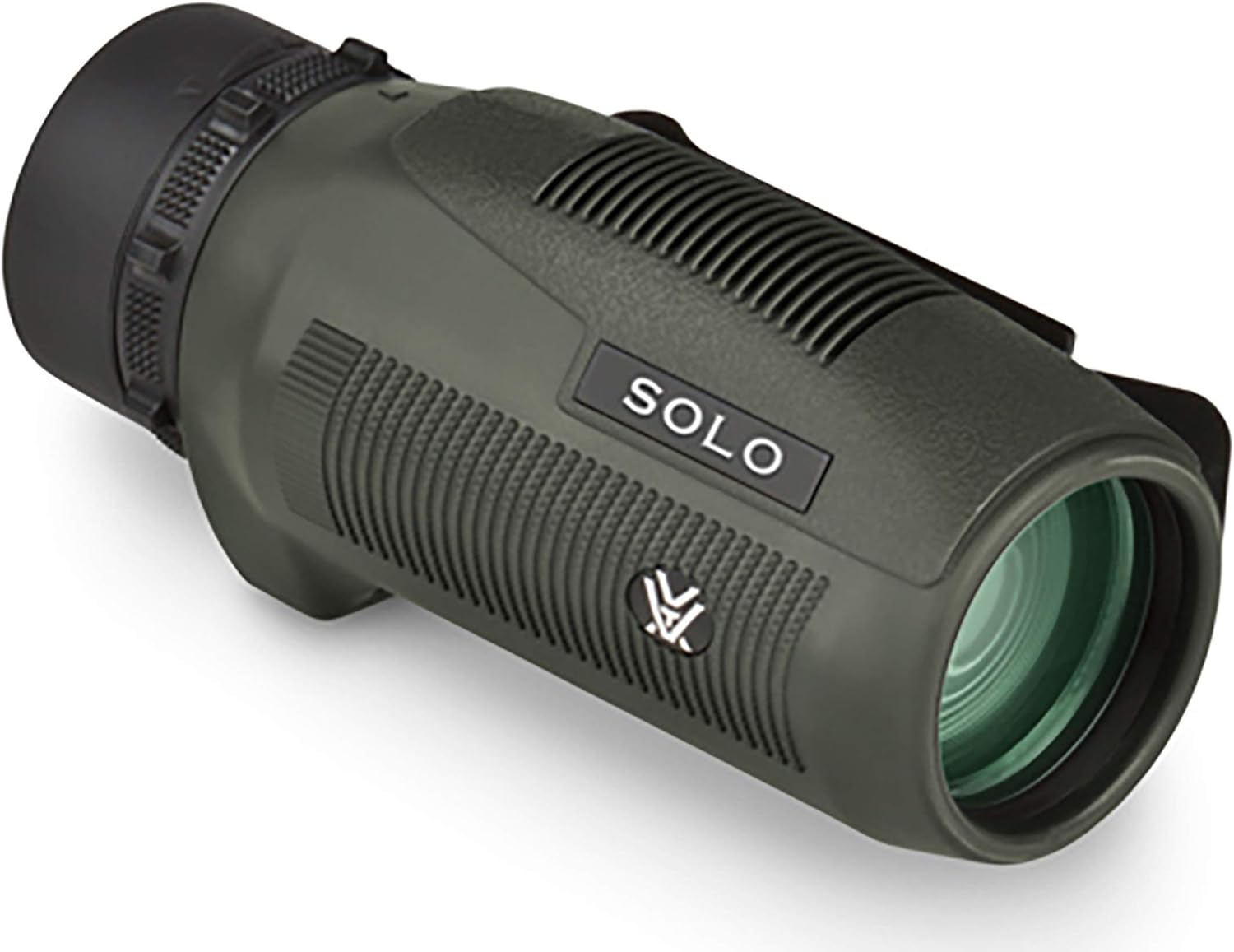

What Customers Love:
Common Concerns:
Bottom Line: The Vortex Solo 10×36 is ideal for birders who want better low-light performance than compact models offer but still need reasonable portability.


Magnification: 10x25 compact
Weight: 6 ounces lightweight
Prism: BaK-4 prism glass
Coating: Multi-coated optics
Field of View: 5.8° angular
Warranty: Limited lifetime US
Check Latest Price on AmazonKey Specifications:
The Celestron Nature 10×25 proves you don’t need to spend a fortune to start monocular bird watching. At under $40, it delivers surprisingly decent optical performance that exceeds expectations for this price range. The BaK-4 prism and multi-coated optics produce clear, reasonably bright images suitable for casual birding.
During field testing, I found it performed best in good lighting conditions where the smaller 25mm objective lens wasn’t a limitation. The twist-up eyecup works well for eyeglass wearers, and the focus wheel operates smoothly. While it doesn’t match the optical quality of premium models, it’s perfectly adequate for identifying common backyard birds and learning the basics of monocular use.
The lightweight design makes it ideal for children or anyone wanting to try monocular birding without a significant investment. Celestron’s limited lifetime warranty provides peace of mind, though the build quality suggests it should withstand normal use. Many customers report being pleasantly surprised by its performance given the budget price.
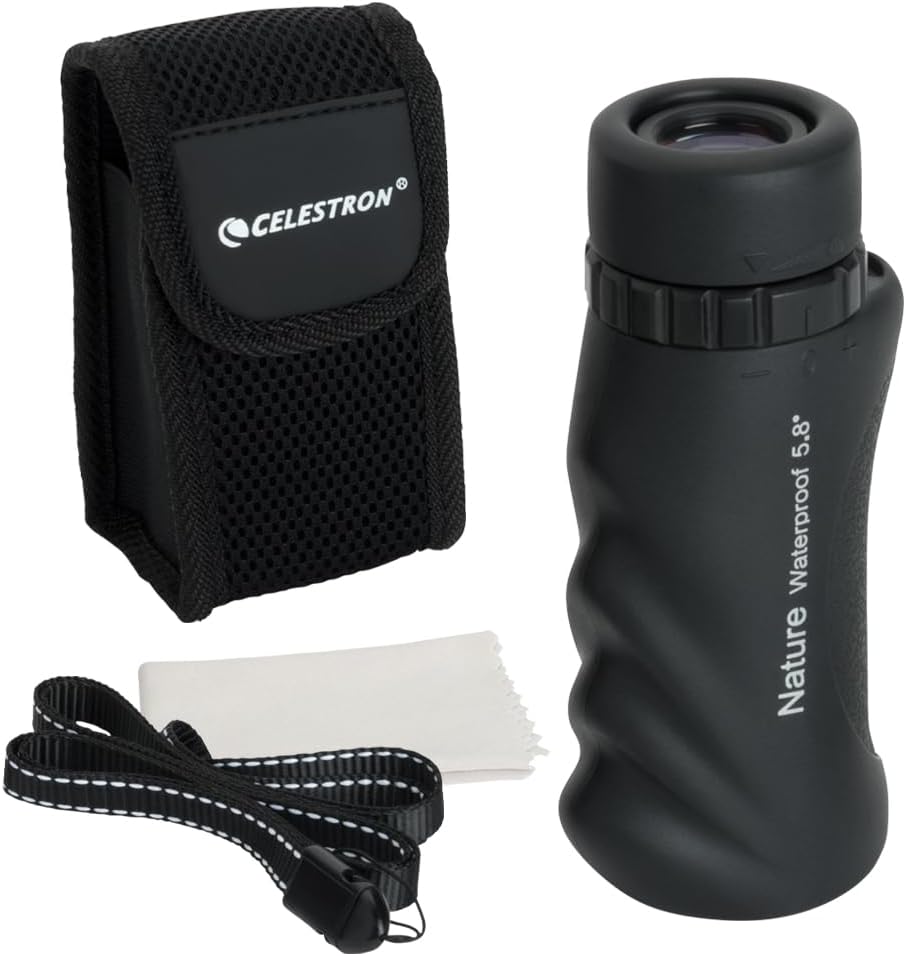

What Customers Love:
Common Concerns:
Bottom Line: The Celestron Nature 10×25 is perfect for budget-conscious beginners or as a backup monocular that won’t break the bank.


Magnification: 8x42 configuration
Field of View: 360ft/1000yards
Light Transmission: 99.9% claimed
Build: Nitrogen-filled waterproof
Prism: BAK-4 green film
Warranty: Lifetime warranty
Check Latest Price on AmazonKey Specifications:
The FEEMIC 8×42 delivers remarkable value by offering a large 42mm objective lens at a budget price point. This combination provides excellent light-gathering capability typically found in models costing three times as much. The 8x magnification with the wide 360ft field of view makes it particularly effective for tracking birds in flight or scanning large areas.
The fully multi-coated optics and BAK-4 prism produce bright, clear images that impressed me during testing. The nitrogen-filled, waterproof construction has held up well through various weather conditions. The adjustable eyecups accommodate eyeglass wearers, and the included tripod connector adds versatility for extended observation sessions.
With over 3,300 reviews averaging 4.4 stars, users consistently praise its value proposition. While some report concerns about long-term durability, the lifetime warranty provides protection. For birders wanting the light-gathering advantage of a 42mm lens without the premium price, this monocular delivers impressive performance.


What Customers Love:
Common Concerns:
Bottom Line: The FEEMIC 8×42 offers the best value for birders wanting a large aperture monocular without the premium price tag.


Magnification: 12x55 high power
Field of View: 352ft/1000yds
Waterproof: IPX7 rating
Weight: 1.54 pounds
Prism: 18mm BAK-4 optics
Bonus: Smartphone adapter included
Check Latest Price on AmazonKey Specifications:
The Gosky 12×55 pushes the boundaries of handheld monocular performance with its 12x magnification and massive 55mm objective lens. This combination excels for observing distant birds like raptors or shorebirds where getting closer isn’t possible. The large objective lens gathers exceptional amounts of light, producing bright images even in challenging conditions.
The included smartphone adapter opens up photography possibilities, allowing you to capture images and videos through the monocular. The IPX7 waterproof rating means it can handle submersion, providing confidence in harsh weather. The nitrogen-filled design prevents internal fogging, and the twist-up eyecup accommodates various users comfortably.
At 1.54 pounds, it’s notably heavier than other models tested, and the 12x magnification can be challenging to hold steady without support. However, for situations requiring maximum reach, this monocular delivers impressive performance. The 9,000+ reviews reflect its popularity among users needing high-power magnification.


What Customers Love:
Common Concerns:
Bottom Line: The Gosky 12×55 is ideal for birders who prioritize maximum magnification and don’t mind the extra weight for superior long-distance viewing.


Weight: 9.1 ounces ultralight
Magnification: 10x42 full size
Eyepiece: 22.5mm extra large
Focus: Double focus ring system
Close Focus: Less than 3 yards
Warranty: Lifetime warranty
Check Latest Price on AmazonKey Specifications:
The Usogood 10×42 achieves something remarkable – full-size 10×42 performance at just 9.1 ounces, making it one of the lightest in its class. The 22.5mm extra-large eyepiece provides comfortable viewing even during extended sessions, reducing eye strain significantly compared to standard eyepieces.
The double focus ring system offers both fast rough focusing and fine-tuning precision, particularly useful when switching between distant birds and closer subjects. The ability to focus under 3 yards opens up possibilities for observing butterflies and other close subjects that most monoculars can’t handle. The BAK4 prism and multi-coated lenses deliver clear, bright images that exceed expectations for this price point.
While Usogood isn’t as established as Vortex or Bushnell, the lifetime warranty and 30-day money-back guarantee provide confidence. Customer reviews frequently mention the exceptional weight-to-performance ratio and comfortable viewing experience. For birders seeking full-size optics without the typical weight penalty, this model deserves serious consideration.


What Customers Love:
Common Concerns:
Bottom Line: The Usogood 10×42 offers an unbeatable combination of full-size optics and ultralight weight, perfect for all-day birding without fatigue.
Understanding how monoculars compare to other optical devices helps you make the right choice for your birding style. I’ve used all types of optics extensively, and each has its place in a birder’s toolkit.
Monoculars excel in situations where portability and quick deployment matter most. During my hikes, I can pull out my monocular and spot a bird in seconds, while binocular users are still removing lens caps and adjusting their neck straps. The single-handed operation leaves one hand free for field guides, cameras, or maintaining balance on uneven terrain.
For travelers and backpackers, the weight and space savings are significant. My 10×25 monocular weighs less than 6 ounces and fits in any pocket, while equivalent binoculars weigh 12-16 ounces and require dedicated carrying space. When exploring the differences between binoculars vs telescope options, monoculars offer a middle ground with better portability than both.
Spotting scopes provide higher magnification (typically 20-60x) and superior image stability when mounted on tripods, making them ideal for shorebird observation or hawk watching from fixed positions. However, they’re impractical for forest birding or following birds through dense vegetation where mobility is essential.
A quality monocular costs $50-200, while decent spotting scopes start at $300 and quickly exceed $1000 for professional models. For casual birders or those just starting out, a monocular provides 80% of the functionality at 20% of the cost. When researching spotting scope guides, consider whether you really need that level of magnification for your birding activities.
The right accessories enhance your monocular birding experience significantly. Through years of field use, I’ve identified the accessories that actually make a difference versus those that just add weight to your pack.
Even the steadiest hands benefit from stabilization, especially with 10x or higher magnification. A lightweight monopod provides excellent support without the bulk of a tripod. I use a carbon fiber hiking pole that doubles as a monopod – simply rest the monocular on top for rock-steady views. For extended observation sessions, a mini tripod with a monocular adapter transforms your handheld optic into a mini spotting scope.
The included neck straps are usually adequate, but upgrading to a padded, quick-release strap improves comfort during all-day use. I prefer a chest harness system that keeps the monocular secure and accessible without swinging around. A quality protective case is essential – look for semi-rigid cases with belt clips for quick access while protecting your investment.
Clean optics are crucial for optimal performance. Carry a lens pen with retractable brush and cleaning tip to remove dust and fingerprints. Microfiber cloths should be kept in sealed plastic bags to prevent contamination. Anti-fog wipes prove invaluable during humid conditions or temperature transitions. Never use paper towels or clothing to clean lenses – they can scratch the delicate coatings.
Mastering proper technique transforms your monocular from a simple magnifier into an effective birding tool. These methods come from thousands of hours in the field and countless missed opportunities that taught me what really works.
Start by locating birds with your naked eye, then bring the monocular to your eye while maintaining focus on the bird’s location. This prevents the common mistake of searching blindly through magnified view. Practice the “spot and lift” technique at home with stationary objects until it becomes automatic.
For birds in flight, track them with your naked eye while gradually bringing the monocular into position. Don’t try to find flying birds through the monocular first – the narrow field of view makes this nearly impossible. Once you’ve acquired the bird, use smooth, steady movements to follow its path.
Brace your viewing arm against your body or a solid object whenever possible. I tuck my elbow against my ribs for added stability. When sitting, rest your elbows on your knees. Leaning against trees or rocks provides excellent support for extended viewing. Breathe normally but press the monocular to your eye socket during the natural pause after exhaling for the steadiest view.
Position yourself so the sun is behind or to your side, never directly in front. Early morning and late afternoon provide the best lighting conditions with warm, angled light that highlights bird features. In harsh midday sun, seek birds in shaded areas where contrast is reduced. Use your free hand to shield the objective lens from direct sunlight, which can cause glare and reduce image quality.
Proper maintenance extends your monocular’s life and maintains optimal performance. I’ve learned these lessons through both proper care and unfortunate mistakes that could have been avoided.
After each outing, use a soft brush or compressed air to remove loose debris before it embeds in moving parts. Clean lenses only when necessary – overcleaning can damage coatings. When cleaning is needed, breathe gently on the lens to create moisture, then wipe in circular motions from center to edge with a clean microfiber cloth.
Check and clean the eyecup threads monthly to prevent grit buildup that can damage the adjustment mechanism. Inspect O-ring seals for cracks or deterioration, especially on waterproof models. A tiny amount of silicone grease on the focus wheel keeps it operating smoothly in all conditions.
Store your monocular in a cool, dry place with silica gel packets to prevent moisture buildup. Avoid leaving it in hot cars where extreme temperatures can damage internal components or cause lubricants to migrate. Remove batteries from models with illuminated reticles to prevent corrosion.
Keep the monocular in its case when not in use, but ensure it’s completely dry first to prevent mold growth. Store with lens caps on but slightly loose to prevent pressure on the glass. Once yearly, have your monocular professionally serviced if you use it frequently – preventive maintenance costs far less than repairs.
Each season presents unique opportunities and challenges for monocular birding. Understanding these variations helps you prepare properly and maximize your birding success throughout the year.
Spring migration brings waves of colorful warblers, but they’re often high in leafing trees. The lighter weight of a monocular reduces neck strain during prolonged upward viewing. I’ve found 8x magnification ideal for canopy birding as it provides a wider field of view for tracking quick-moving birds through branches. Focus on woodland edges and water sources where migrants concentrate.
Heat shimmer becomes problematic during summer, especially when viewing across open fields or water. Early morning birding before thermal distortion begins yields the best views. The compact size of monoculars means less equipment to carry during hot weather. Keep your monocular in shade when possible – hot metal parts can become uncomfortable to handle and internal expansion can affect focus mechanisms.
Cold weather brings its own challenges. Rubber armor becomes stiff and less grippy, so consider adding textured tape for better handling with gloves. Rapid temperature changes when moving from heated vehicles to cold outdoors can cause fogging – allow your monocular to acclimate gradually. Winter’s bare trees actually make bird observation easier, and the lower sun angle provides excellent lighting for most of the day.
For general bird watching, 8x or 10x magnification provides the best balance of detail and stability. The 8x offers a wider field of view and steadier handheld viewing, making it ideal for woodland birding and tracking birds in flight. The 10x provides more detail for distant birds but requires steadier hands. Avoid anything over 12x unless you plan to use a support system, as image shake becomes problematic.
Monoculars and binoculars each have advantages. Binoculars provide better depth perception and less eye fatigue during extended viewing, while monoculars offer superior portability, quicker deployment, and one-handed operation. For casual birding, hiking, or travel, a quality monocular can be just as effective. Serious birders often carry both, using the monocular for quick observations and binoculars for extended watching sessions.
Stabilize your monocular by bracing your viewing arm against your body, tucking your elbow into your ribs. Use available supports like trees, fence posts, or rocks. Practice breathing control – view during the natural pause after exhaling. Consider lower magnification (8x instead of 10x or 12x) for steadier views. For extended observation, use a monopod or mini tripod with an adapter.
The first number (10x) indicates magnification power – objects appear 10 times closer than with the naked eye. The second number (42) is the objective lens diameter in millimeters. Larger objective lenses gather more light, providing brighter images, especially in low-light conditions. A 10×42 monocular offers high magnification with excellent light-gathering ability but will be larger and heavier than a 10×25 model.
Yes, most modern monoculars feature adjustable eyecups designed for eyeglass wearers. Twist-down or fold-down eyecups allow glasses wearers to get their eyes close enough to see the full field of view. Look for models with at least 14mm of eye relief if you wear glasses. Some users prefer to remove their glasses and adjust the monocular’s focus to compensate for their prescription, though this doesn’t work for those with significant astigmatism.
The Celestron Nature 10×25 at $39.99 offers the best value for budget-conscious birders. It provides decent optical quality with multi-coated lenses and BAK-4 prism, plus it’s backed by Celestron’s lifetime warranty. The FEEMIC 8×42 at $37.70 is another excellent budget option if you want a larger objective lens for better light gathering. Both deliver performance that exceeds their price point.
A 10x monocular makes objects appear 10 times closer, so a bird 100 feet away appears as if it were 10 feet away. The maximum distance you can see depends on atmospheric conditions, object size, and lighting. Under ideal conditions, you can identify large birds like hawks at 500+ yards and see details on medium-sized birds at 50-100 yards. The limiting factor is usually image clarity and stability rather than magnification.
Waterproof construction is highly recommended for bird watching. Even if you don’t bird in the rain, morning dew, humidity, and sudden weather changes can damage non-waterproof optics. Waterproof monoculars are nitrogen or argon purged to prevent internal fogging when temperatures change. This protection is worth the small additional cost, especially considering you’ll likely use your monocular in various outdoor conditions over many years.
After extensive testing and years of field experience, I can confidently say that monoculars deserve a place in every birder’s toolkit. The Vortex Solo 10×25 remains my top overall recommendation for its unbeatable combination of optical quality, portability, and lifetime warranty at just $79. For those wanting premium performance, the Bushnell Legend 10×42 delivers professional-grade optics that rival binoculars costing much more.
Budget-conscious birders shouldn’t overlook the Celestron Nature 10×25 or FEEMIC 8×42, both of which provide surprisingly good performance under $40. The key is matching the monocular to your specific needs – prioritize portability for hiking, larger objectives for low-light performance, or wider fields of view for tracking birds in flight.
Remember that the best monocular is the one you’ll actually carry and use. A compact 10×25 in your pocket beats expensive binoculars left at home. Start with an affordable model to learn your preferences, then upgrade once you understand what features matter most for your birding style. With proper technique and realistic expectations, a quality monocular opens up incredible birding opportunities that you might otherwise miss.
Whether you’re identifying warblers in spring migration, watching raptors soar overhead, or simply enjoying backyard birds, these monoculars will enhance your connection with nature. The combination of modern optics technology and thoughtful design has made monocular bird watching more rewarding than ever. Pick the model that fits your budget and style, then get out there and start exploring the amazing world of birds with your new optical companion.


